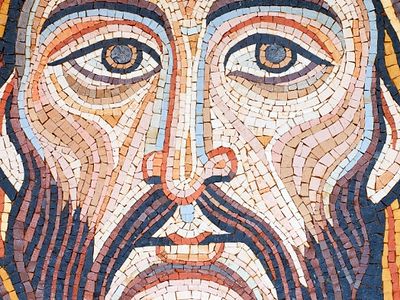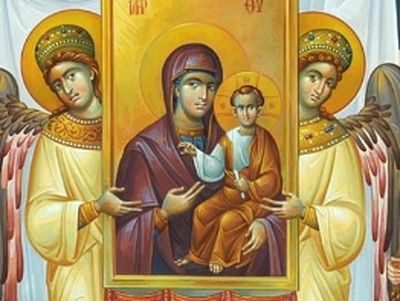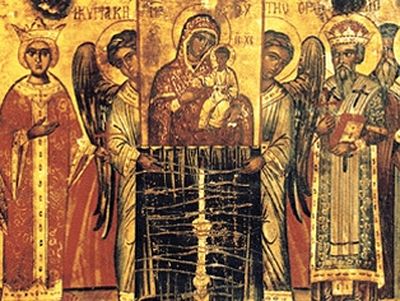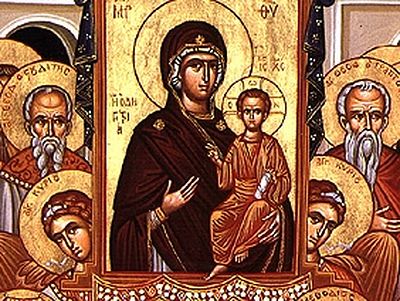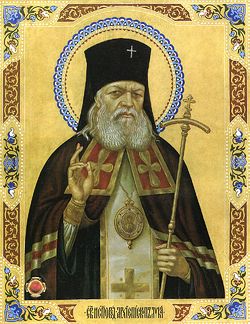
The Holy Apostle Peter writes the following in his Second General Epistle: “But there were also false prophets among the people, even as there will be false teachers among you, who will secretly bring in destructive heresies, even denying the Lord who bought them, and bring on themselves swift destruction. And many will follow their destructive ways, because of whom the way of truth will be blasphemed”(II Pet. 2:1-2).
St. Paul, returning to Palestine from Greece, made a stop in Ephesus. To the the Christian inhabitants of the town there he said: “For I know this, that after my departure savage wolves will come in among you, not sparing the flock. Also from among yourselves men will rise up, speaking perverse things, to draw away the disciples after themselves” (Acts 20:29-30).
Many such false teachers and schismatics existed in the first centuries of Christianity. Some heresies troubled the Church for centuries, such as the heresies of Arius, of Macedonius, Eutyches, Dioscorus, of Nestorius and also the heresy of Iconoclasm. These heresies caused much disturbance in the Church and afflicted the Church greatly. There were many confessors and martyrs who shed their blood defending the true faith in the fight against false teachers and heretics.
There were also many great prelates, who also suffered under persecution and were often exiled. Saint Flavian, Patriarch of Constantinople, for example, in a council chaired by Dioscorus, called the Robber Synod and was “beaten so savagely that he died three days later.”
The last in the line-up of heresies, the heresy of Iconoclasm, was the one that tormented our Orthodox Church the most. This heresy first appeared during the reign of Emperor Leo the Isaurian, who came to the throne in 717. He ascended the throne with the help of the army, which had many opponents of those who venerate holy icons, within its ranks. Because he wanted to please the army he started a harsh persecution against Iconophiles.
This persecution continued on into the reign of Emperor Constantine Copronymus, who succeeded Leo to the throne. The name Copronymus (“dung-named”) comes from coprus meaning manure, i.e. feces. He was called Copronymus because he defecated in his baptismal font. These two emperors were in power for many years and brought great affliction upon the Church. Following these, there were other Iconoclast emperors, who continued the work of their predecessors and tormented the Church for years.
We can not begin to describe the suffering endured by the Church during the years of Iconoclasm, and especially the monks who were in the frontline in the battle for holy icons. The Iconoclast emperors closed many monasteries and turned many churches which had icons into shells. The monks were savagely beaten: they took out their eyes, noses were cut off, icons were broken on their heads. They burnt the fingers of icon-painting hagiographers with burning irons.
The persecution only stopped when Empress Irene came to the throne of the Byzantine Empire, but this was not yet final. In 787 Irene convened the Seventh Ecumenical Council, which set down Orthodox teaching on the veneration of holy icons. But even after this Council Iconoclast emperors still existed, for example, Michael and others. The heresy was crushed only under the God-fearing Augusta, Theodora, when a local council was convened in Constantinople in 842, which upheld the Orthodox teaching. The council pronounced an anathema on all those who dare to say that the veneration of holy icons is idolatry and that Orthodox Christians are idolaters.
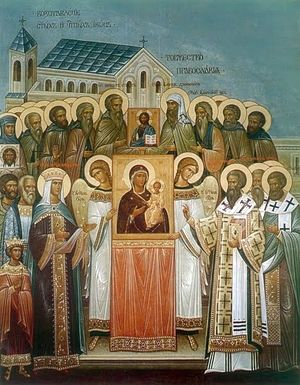
And here various sects still tell us exactly this thing. They dare to call our icons idols and call us idolaters. And with what nerve? I will tell you of an incident that took place recently in a city in Siberia. During the Liturgy two Baptists walked into the church and started shouting that the Orthodox are pagans idol-worshippers and that the icons are idols. What nonsense!
How dare they open their mouths and say these words dripping with venom, calling us pagans and our icons idols? This shows that they have not understood correctly the second commandment of Mosaic Law: “You shall not make for yourself a carved image —any likeness of anything that is in heaven above, or that is in the earth beneath, or that is in the water under the earth;”(Ex. 20.4).
What does this commandment mean? I think the meaning is clear. The commandment prohibits the building of idols for worship, instead of worshipping the One, Unique and True God - as did ancient peoples: the Assyrians, the Babylonians, Egyptians, Greeks, Romans and others - instead of worshipping the One, Unique and True God. That is idolatry. But is our veneration of holy icons anything like idolatry? Certainly not. Idols represented something that does not really exist, something that is a product of imagination. Our own icons depict reality. Really, did the Lord Jesus Christ, who we glorify amd who we venerate in icons, not living among us? Did the Virgin Mary, who was painted by the apostle and evangelist Saint Luke not live among us? This icon was blessed by the very Theotokos herself, saying that grace would always be with this icon. Do you know how many miracles happen from icons of the Virgin Mary?
And the other icons, don’t they show real saints of God who lived here on Earth? These icons are their portraits and in no way are idols. Only impious and filthy mouth dares to say that our icons are idols and that we are idolaters. Let the ungodly be silent as the Ecumenical Council has pronunced anathema upon them. You should know this, and remember this and not keep company with heretics.
Do not leave the Church, do not rip the robe of Christ. Remember that Christ in his prayer at Gethsemane, the hierarchical prayer, begged his Father, saying: “That they all may be one, as You, Father, are in Me, and I in You; that they also may be one in Us, that the world may believe that You sent Me” (John 17: 21). The Lord wants unity of the Church. The dissenters, the schismatics, who find errors in the teaching of the Church, are removed from it and believe they will find salvation in their heretical organizations.
But do you know what the great saints said about people who tear the tunic of Christ? Saint Cyprian, bishop of Carthage, said that people who leave the Church and do not have communion with it even if they become martyrs, even with their blood, will not be cleansed of their sin because this grievous sin of dividing the Church cannot even be cleaned with shedding of blood. And the holy martyr Ignatius the God-bearer said that he who causes schism in the Church will not inherit the kingdom of God.
All heretics, however, are preachers of schism. While the apostle says: “Now I urge you, brethren, note those who cause divisions and offenses, contrary to the doctrine which you learned, and avoid them” (Rom. 16:17). And in another letter says this: “If anyone preaches any other gospel to you than what you have received, let him be accursed” (Gal. 1:9). And all the heretics do not preach what the Orthodox Church, which gave us spiritual birth, preaches.
Remember also, the word of our Lord Jesus Christ, Who told the apostles, and through them us, their successors: “He who hears you hears Me, he who rejects you rejects Me, and he who rejects Me rejects Him who sent Me” (Lk. 10:16). These words of the Lord are awesome. Remember them always. Do not forget this day, the day of the Triumph of the Orthodox faith. The faith that was set down by the Seventh Ecumenical Council which established Orthodoxy and trampled down all heresies and schisms.
Over a thousand years have passed since the time of the Seventh Ecumenical Council and no such Ecumenical Councils have been convened since. Why? The reasons are political. It was impossible to call them. But we should not be sorry that others did not take place and that there are no Ecumenical Councils today. These Seven that we have sorted out all questions and solved all the problems that the Church had with heresies and established the Orthodox faith.
You will say that there are many new heresies and schisms today. Yes, you are right. But we should know that the new heresies are not saying anything new but repeating what the old heretics have already said. All of these heresies were anathematized by the Seventh Ecumenical Council. So the decisions of seven Ecumenical Councils are enough for us, especially the Seventh Ecumenical Council. This is why we rejoice today and celebrate the Triumph of Orthodoxy, which was expressed and fixed by the Seventh Ecumenical Council.
It was precisely for this reason that it was appointed that a doxology should be chanted on this day, as a thanksgiving to God for securing the Orthodox faith. Let us chant this doxology now.

